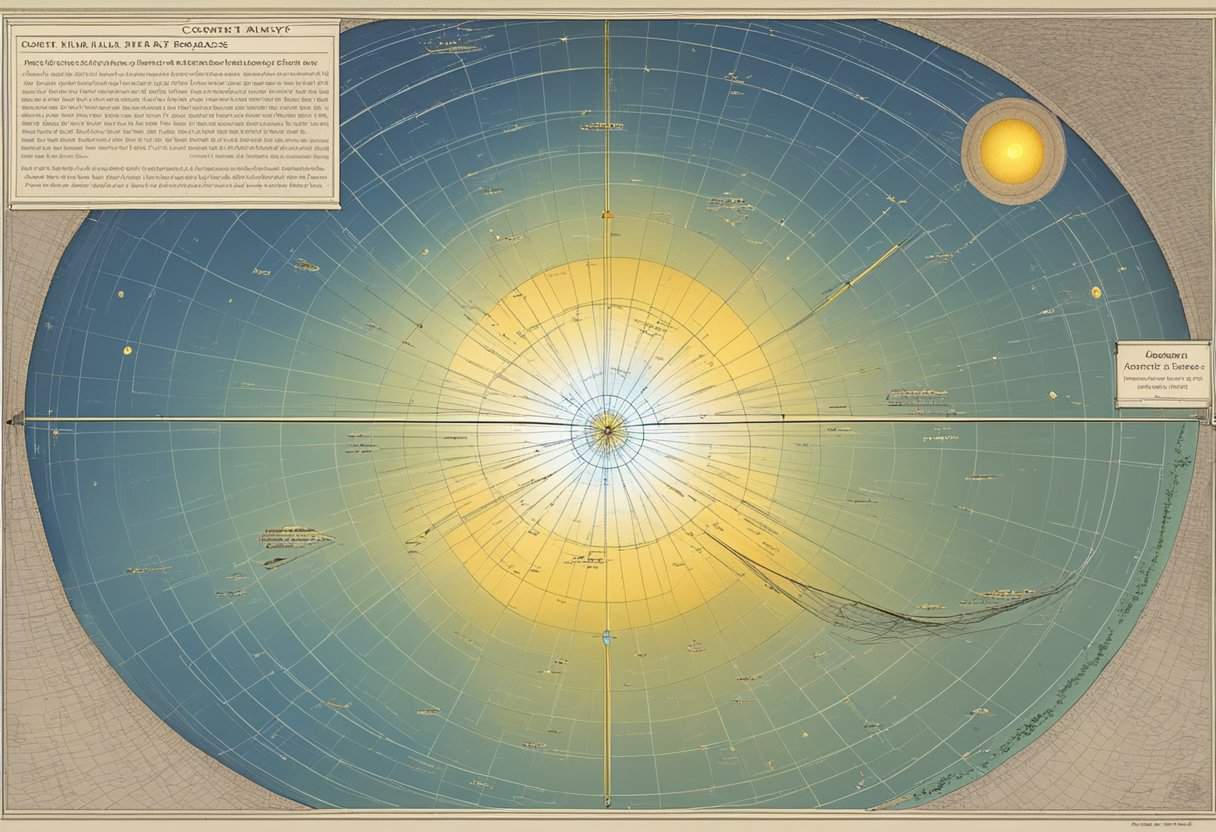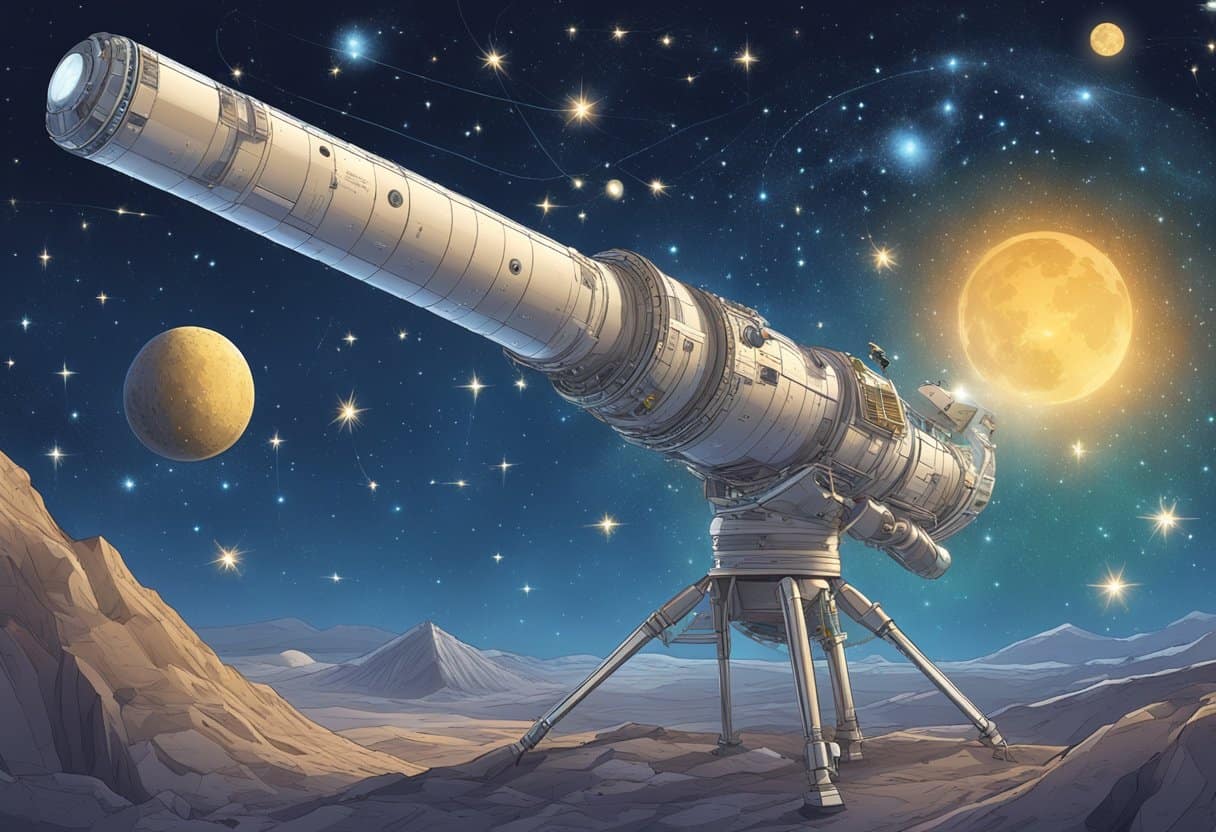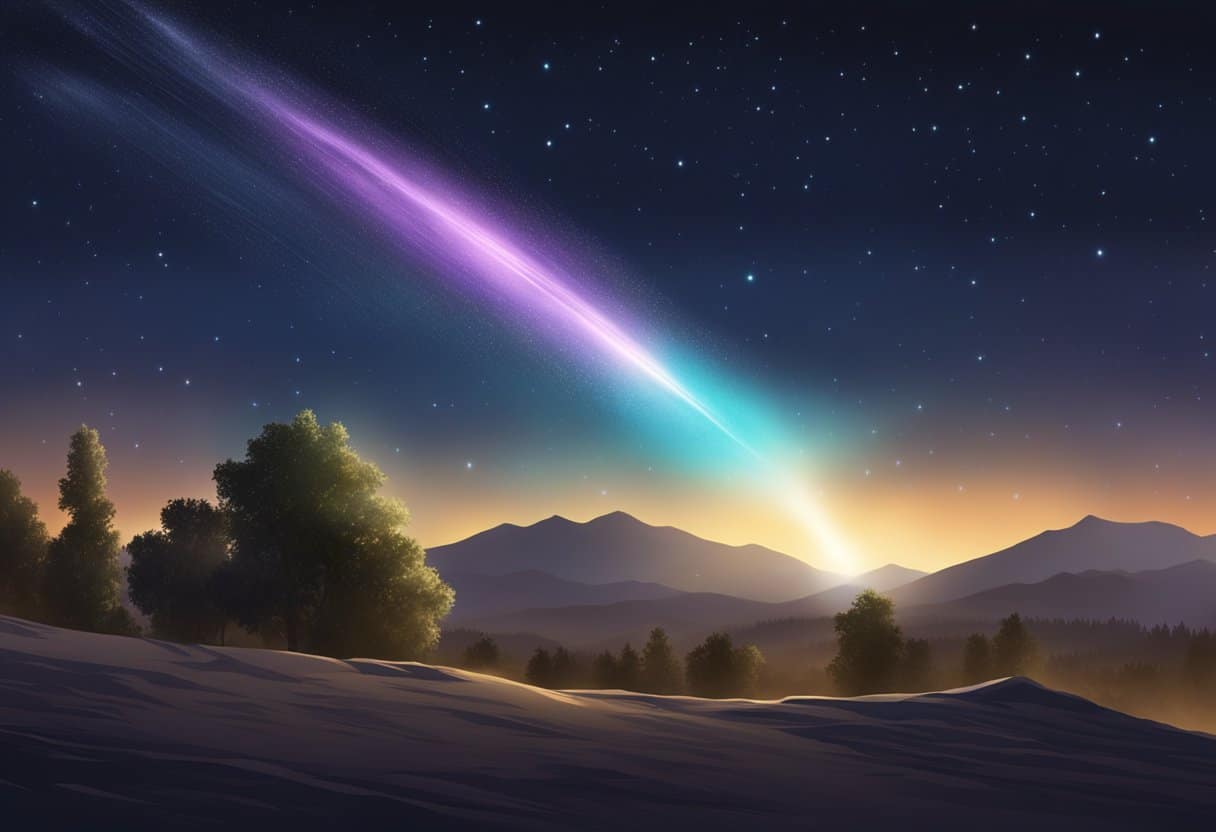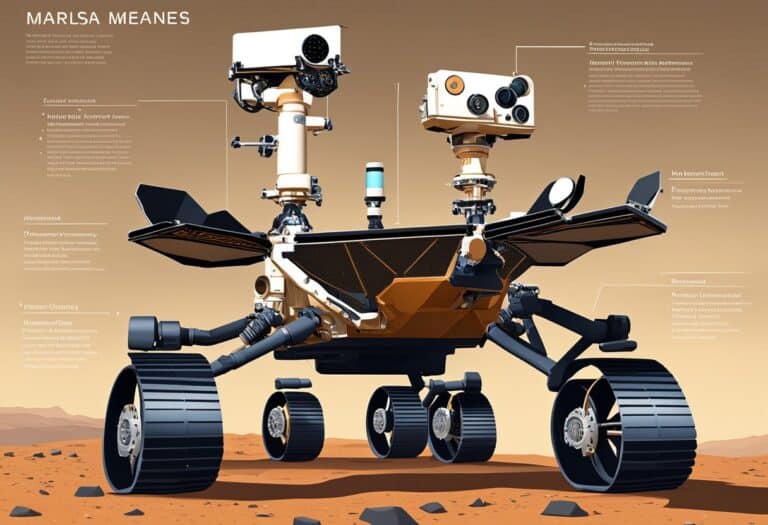Throughout history, comets have captivated the human imagination with their sudden appearance and mysterious origins.
These celestial bodies, composed of ice, dust, and rock, leave in their wake a spectacular tail that can stretch across the sky, inspiring both awe and fear. Comets have influenced countless cultural narratives and have been seen as both omens of doom and symbols of change.
The process of naming comets is steeped in tradition and has evolved over time. Initially, comets were often named after the year they were observed or the person who discovered them. This practice has led to some comets carrying the names of multiple discoverers or being associated with significant historical events.
The naming conventions have been standardized so that the scientific community can keep track of these wandering ice mountains as they journey through our solar system.
Comet names traditionally reflect their discoverers or observation year, evolving to standardized IAU conventions. Famous comets like Halley’s and Hale-Bopp have enriched cultural and scientific perspectives, enhancing our understanding of cometary motion and solar system history.
Historical Significance of Comets

Throughout history, comets have served as celestial milestones, marking significant moments and shaping cultural narratives.
Famous Historical Comets
Halley’s Comet: One of the most distinguished comets known, Halley’s Comet has been regularly observed and recorded since 240 BC. The comet has a predictable 76-year orbit, which allowed Edmond Halley to first determine its periodic nature in 1705. Observations of Halley’s Comet have been instrumental in advancing the understanding of cometary motion.
Comet of 1577: The Comet of 1577 was a significant celestial event that was widely seen across Europe. Its passage contributed to the shift from an Earth-centered universe to a heliocentric view, as astronomers like Tycho Brahe used its appearance to argue that comets were not atmospheric phenomena, but celestial bodies.
| Comet Name | Year of Discovery or Notable Event |
|---|---|
| Halley’s Comet | 1986 (Last appearance) |
| Comet Hale-Bopp | 1995 |
| Comet Hyakutake | 1996 |
| Comet Shoemaker-Levy 9 | 1994 (Collision with Jupiter) |
| Comet Swift-Tuttle | Perseid meteor shower (Annual) |
Cultural Impact
Comets in Mythology and Prophecy: In many cultures, comets were seen as harbingers of doom or omens of great change. For example, the appearance of a comet foretold the death of Julius Caesar in 44 BC, reinforcing beliefs in their prophetic power.
Scientific Enlightenment: The study of comets has contributed significantly to the field of astronomy. Events like the Great Comet of 1680 spurred on scientific discourse and the development of astrophysics, shifting humanity’s understanding of the universe and our place within it.
Characteristics of Comets
Comets are fascinating celestial objects that display unique physical and chemical properties as they traverse through space. Understanding their composition and orbital patterns can provide insight into the early solar system.
Cometary Composition
You’ll find that comets are comprised of a nucleus, which contains ice, dust, organic molecules, and rocky material. This mix has led them to be described as “dirty snowballs” or “icy dirtballs,” depending on their ice-to-dust ratios. When they near the sun, the ice can vaporize to release gas and dust, creating a visible atmosphere called a coma, along with a distinct tail. Studies such as those on comet nucleus C/2001 OG108 (LONEOS) underline the diversity in size among these comet nuclei.
Orbital Patterns
Your understanding of comets is not complete without considering their orbits. Comets typically follow elliptical paths around the sun, classifying them based on their orbital periods. Short-period comets, like Halley’s Comet, complete an orbit in less than 200 years, while long-period comets can take much longer. Each comet’s orbital trajectory is meticulously detailed by astronomers to predict future passes and study past visits. Researching their orbital periods and characteristics gives us crucial data about the comet’s origin and life span.
Naming Conventions
When you look up at the night sky and see a comet, you may wonder how it got its name. The process, steeped in history, follows certain conventions that have evolved over time. Let’s explore the rules and methods that govern the naming of these celestial wanderers.
Traditional Naming Systems
Historically, comets were often named after their discoverers. For example, Halley’s Comet is named after the astronomer Edmond Halley, who calculated its orbit. This tradition could result in a comet having multiple names, reflecting various discoverers or observers associated with it. Here is a simplified breakdown of traditional naming:
- Single Discoverer:
- Comet + [Discoverer’s Last Name] (e.g., Comet Halley)
- Multiple Discoverers:
- Comet + [First Discoverer’s Last Name] / [Second Discoverer’s Last Name] (e.g., Comet Shoemaker-Levy)
Modern Nomenclature
In more recent times, a standardized system has been adopted. Initiated by the International Astronomical Union (IAU), this system is designed to ensure that each comet gets a unique and systematic name. The naming convention for a non-periodic comet involves the year of its discovery followed by a lowercase letter denoting the half-month of discovery and an order number. Periodic comets, however, are prefixed by a number indicating the order of their discovery. The rules are:
- Non-Periodic Comets:
- C/ [Year of Discovery] [Half-Month of Discovery] [Order of Discovery] (e.g., C/2021 A1)
- Periodic Comets:
- [Order of Discovery]P/ [Discoverer’s Last Name] (e.g., 1P/Halley)
These systems ensure clarity and prevent confusion when referring to the various comets that grace our skies.
Notable Comets
In the vast expanse of our solar system, certain comets have made history with their spectacular displays and scientific importance. These celestial bodies provide insights into the early solar system, and some appear so infrequently that they are once-in-a-lifetime sights. The following are among the most renowned comets.
Halley’s Comet
Halley’s Comet is arguably the most famous of all comets, known particularly for its predictability and periodic visits every 74-79 years. Your last chance to see it from Earth was in 1986, and it’s due to return in 2061. This comet provides a unique opportunity to study changes in a comet over successive passages through the inner solar system.
Comet Hale-Bopp
Discovered in 1995, Comet Hale-Bopp offered a stunning display with its exceptionally bright nucleus and long tail. This comet holds the record for the longest period of visibility to the naked eye, nearly 18 months. Your fascination with Hale-Bopp’s brilliance serves as a reminder of the dynamic and unpredictable nature of comets.
Comet Hyakutake
Comet Hyakutake, known as the Great Comet of 1996, swept past Earth at one of the closest comet flybys of the last 200 years. With its strikingly blue ion tail, your experience of Hyakutake was brief but memorable. The comet provided an unprecedented look at the icy building blocks of our early solar system due to its bright and close passage.
Middle Ages Practices
During the Middle Ages, comets were often named after the year they appeared or the notable events that coincided with their passing. The appearance of the comet in 1577, for example, was a significant event and was widely documented and is discussed in a historical context in “The comet of 1577“.
Modern Astronomical Standards
In contemporary astronomy, there are precise standards for naming comets. Typically, a comet is named after its discoverer(s) or sometimes after an instrument that was instrumental in its discovery. For instance, the famous Halley’s Comet is named after Edmond Halley, who pinpointed its orbit.
Exploration of Comets
The relentless pursuit of cosmic knowledge drives humanity, and your understanding of comets has deepened significantly through targeted space missions and consequential discoveries.
Space Missions to Comets
Space agencies have orchestrated several missions to unveil the mysteries of comets. The Rosetta mission stands out, launched by the European Space Agency (ESA) to study the comet 67P/Churyumov-Gerasimenko. It provided groundbreaking insights by deploying the Philae lander on the comet’s surface. Here’s a concise list of other notable missions:
- NASA’s Stardust: Captured comet Wild 2 particles for Earth return.
- ESA’s Giotto: Encountered Comet Halley and returned valuable data.
- NASA’s Deep Impact: Created an impact crater on Comet Tempel 1 for analysis.
Significant Discoveries
The odyssey through space has led to striking findings about these celestial wanderers. The water production rate of comets, critical for gauging activity, has been measured by various missions, establishing a baseline for comparing comet compositions. The historic exploration of Halley’s Comet has also revealed much about cometary structures, influencing the knowledge of comet orbits and physical properties. This array of expeditions continues to shed light on the primordial substances that comets carry, offering clues to the origins and early conditions of our solar system.
Naming After Discoverers

Comet nomenclature typically adheres to the tradition of naming these celestial objects after their discoverers. This practice honors the individuals or teams who first spot a new comet.
Single Discoverer
If you are the sole discoverer of a comet, your last name becomes the official designation. For example, Comet Hale-Bopp carries the surname of its co-discoverer Alan Hale. Many comets throughout history have gained fame carrying the names of those who first observed them, such as Comet Hyakutake, discovered by Yuji Hyakutake.
Multiple Discoverers
When several individuals simultaneously discover a comet, it is named after a maximum of three discoverers. The great comet of 1996, Comet Hale-Bopp, honors both Alan Hale and Thomas Bopp. This naming convention is a testament to the combined efforts in the discovery process. The rules of naming are confined to ensure that the comet names remain practical and concise.
Cultural and Mythological Names
Throughout history, comets have captivated your imagination, giving rise to a plethora of names derived from cultural and mythological origins. These names reflect human fascination and the rich narratives intertwined with these celestial phenomena.
Folklore Influences
In various cultures, comets have often been seen as harbingers of doom or omens of change. For instance, Halley’s Comet has inspired a number of legends among the Great Lakes Ojibwa, where it is tied to the myth known as “The First Burning of the Earth,” illustrating the significant role these celestial events play in the mythologies of indigenous cultures.
- China: Ancient Chinese texts often depicted comets as “broom stars”, brushes sweeping away the old.
- Western History: Starting in the Middle Ages, comets were often referred to as “hairy stars” due to their appearance.
Literary References
Comets have also left their mark on literature, symbolizing momentous events or serving as portents. For example, in Shakespeare’s Julius Caesar, a comet is seen the night before Caesar’s assassination, acting as a warning of sorts—a testament to the deep-rooted association of comets with pivotal historical moments.
- Literary works: Use comets as metaphors for brilliant, yet transient moments.
- Poetry: Poets may liken the appearance of a comet to the fleeting nature of life or love.
By examining the names and references given to comets in your cultural tales and literature, you uncover not just a name but a story—a perspective into how your ancestors saw their world and their place within it.
Frequently Asked Questions
In this section, you’ll find concise answers to common inquiries about naming and identifying comets, understanding their features, and learning about upcoming and lesser-known comets.
What are some of the most well-known comets?
The most famous comets include Halley’s Comet, known for its predictable returns every 76 years, and Comet Hale-Bopp, one of the most observed of the 20th century.
How can one identify a comet that is currently visible in the sky?
To identify a visible comet, you can use astronomy apps or websites that track celestial events. Comets are often identified by their glowing coma and sometimes visible tails pointing away from the sun.
What distinguishes a comet from an asteroid?
A comet is primarily made of ice and dust and typically features a glowing coma and tail when it nears the sun, distinguishing it from asteroids, which are rocky bodies without these icy features.
Can you provide a list of several significant comets?
Significant comets include Comet Hyakutake, known for its close approach in 1996, and Comet McNaught with its exceptionally bright visibility in 2007.
Which comet is expected to be visible in the near future?
Astronomy sources and observatories provide forecasts for comet visibility. For instance, Comet Leonard made a remarkable appearance in late 2021 and was visible with binoculars or small telescopes.
What are some rare or lesser-known comets?
Lesser-known comets, such as Comet Borrelly or Comet 45P/Honda-Mrkos-Pajdušáková, provide opportunities for study and observation by avid comet watchers and contribute valuable information to our understanding of comets.







